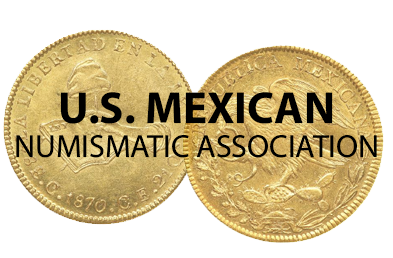Chronology of the Sombrerete 8 Reales and the First Issue of the Second Type
by Alejandro Martínez Bustos and Emiliano Puga Gómez
It is widely accepted that the first Royalist issues in the territories of Chihuahua, Durango and Sombrerete were authorized by the governor of the internal provinces of New Spain, Nemesio Salcedo, by means of an alleged decree dated 8 October 1810. This is not entirely true since the official communication was issued on 25 January 1811 in Chihuahua and it should be noted that by that time the Royal Mint of Sombrerete was already in operation. The document unveiled by the expert, Luis Gómez Wulschner, in the conference Reseña inédita sobre la Casa de Moneda de Sombrerete (2021)https://www.youtube.com/watch?v=-m-Kf_QqeCA, effectively indicates that on 8 October 1810, a meeting was held by the miners and merchants of the Real de Minas de Sombrerete for the establishment of the Sombrerete Royalist Mint, and that two months later, on 8 December 1810, a document was issued that specifically described the design of the coins that would begin to circulate the next day.
The issue was under the direction of the superintendent of mines, José María “Vargas” Machuca, who was a smelter, balancer (balanzario), marker (marcador) and also judge of the corps of silversmiths of the Real Caja de Sombrerete.
The First Type Of Coinage 1810 – 1811
The aforementioned document of 8 December 1810, indicates that round pesos or 8 Reales weighing 26.85 grams, with a fineness of 11 dineros, were coined, being made with punches on molten blanks.
• A cord design evenly on both sides, which we would popularly call gráfila de rayasThe edges are usually smooth, although there are pieces with a cord.
OBVERSE – All integrated into a punch, consisting of a shield 26 millimeters wide.
• Coat of arms of Spain surrounded by the legend R.CAXA.DE. SOMBRETE and uniform typography, with a slanted line on the edge.
• No indication of value or denomination.
REVERSE - Composed of five individual punched marks.
• On the left, the Royal Fifth of the King; ![]()
• On the right, the Fifth of the Treasury of the Royal Caja of Sombrerete; ![]()
• In the center the date; ![]()
• Above the surname VARGAS of the assayer José Vargas Machuca; ![]() and
and
• Below the countermark (contraseña) 3 of VARGAS’ registration as a silversmith and/or assayer. ![]()
Chronology of the First Type of Issue
First Type 1810 – Shield “A”
Shield punch used from 8 December 1810.
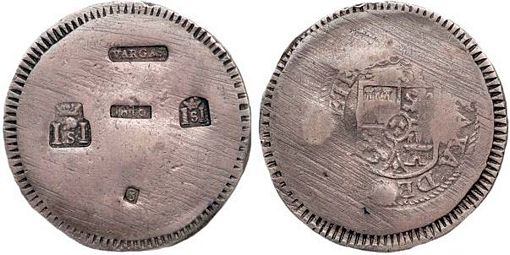 Ira & Larry Goldberg - The Millennia Collection, 26 May 2008, Lot 1106.
Ira & Larry Goldberg - The Millennia Collection, 26 May 2008, Lot 1106.
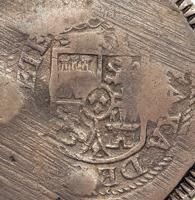
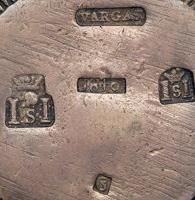
First Type 1810 – Cracked Shield “A”
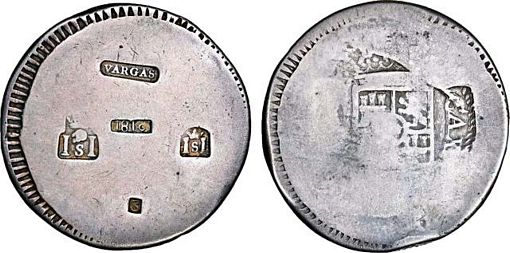 Heritage Auctions - Showcase Auction 61263, 27 May 2022, Lot 97260
Heritage Auctions - Showcase Auction 61263, 27 May 2022, Lot 97260
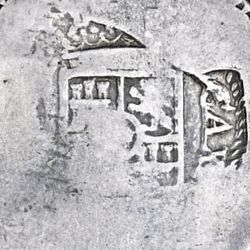
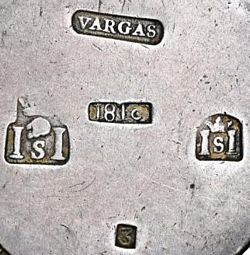
First Type 1811 – Cracked Shield “A”
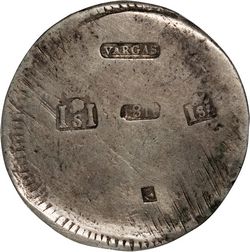
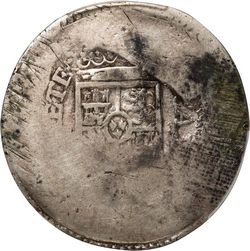
KM-176 (Stack’s Bowers Auction, 31 October 2023, lot 70184)
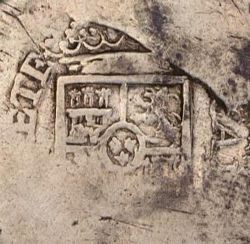
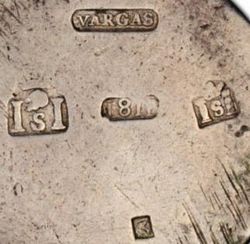
First Type 1811 – Shield “B”
Unlike the previous one, this punch lacks a dot between “R CAXA” and differs in terms of the design of castles and lions, the legend consists of thin and uniform typography.
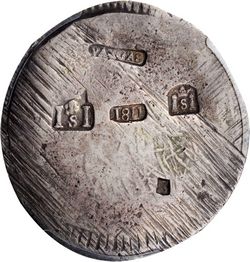
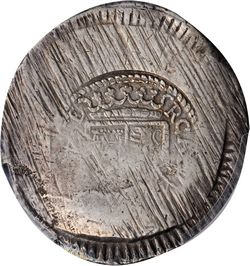
KM-176 (Stack’s Bowers ANA Auction, August 2021, Lot 41166)
"Despite its obvious crudeness, an incredibly charming example of the type, with a partial large circular punch on one side, which is typical of the type, and small punches that remain bold on the other, revealing both the date and mentioning Vargas, whose authority these types were struck under."
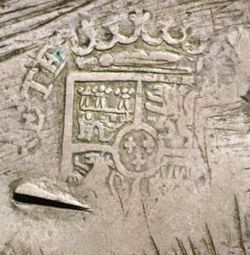
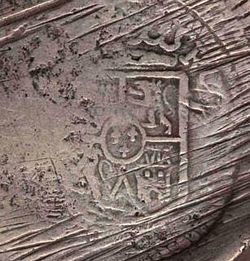
First Type 1811 – Shield “C”
Unlike the previous ones, the coat of arms has a dot between “R•CAXA” and presents a finer style of castles and lions, maintaining the legend with thin and uniform typography.
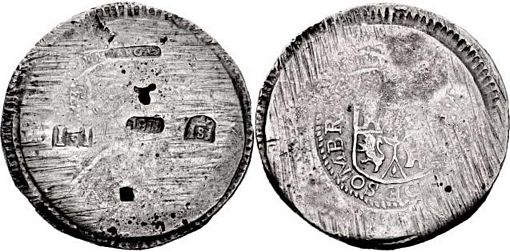 Classical Numismatic Group - Auction 99, 13 May 2015, Lot 1062
Classical Numismatic Group - Auction 99, 13 May 2015, Lot 1062
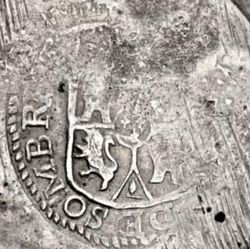
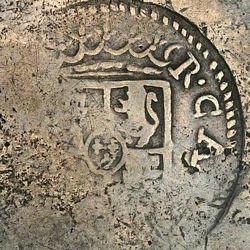
The Second Type of Coinage 1811 – 1812
By a decree of 6 April 1811, notice was given of the circulation of fractional coins, describing in detail the design that the one Real pieces should have. It is highly probable that from this date (or very close to it) an adjustment was made to the 8 Reales and the 4 Reales was begun, both being minted on molten blanks.
• gráfila de rayas on both sides.
OBVERSE
• Coat of arms of Spain surrounded by the legend R.CAXA.DE. SOMBRETE.
• Value 8 on the left, denomination R on the right and both on the outside of the central band.
• gráfila de rayas on outside.
REVERSE
• On the left, the Royal Fifth of the King;
• On the right, the Fifth of the Treasury of the Royal Caja of Sombrerete;
• In the center the date;
• Above, the surname VARGAS of the assayer José Vargas Machuca, in an arch; and
• Below, the countermark 3 of VARGAS’ registration as a silversmith and/or assayer.
Having mentioned the above characteristics in a general way, we consider it necessary to reclassify a new subtype for the 8 Reales of 1811, beyond those that have been previously reported, which will be useful to identify the timetable for the minting, based on the following analysis of its design elements.
First Issue of Second Type 1811 - Obverse “I”
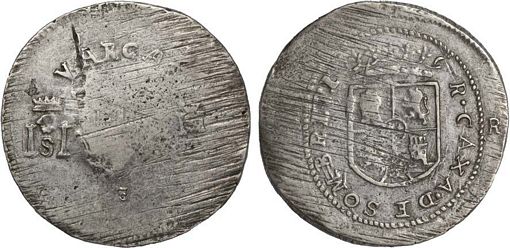
A previously uncatalogued variety. This is, so far, the only combination of dies identified with this shield, characterized by a thin and uniform typography, that is, without any variation in the size of the letters, as observed in the example of the first type. It features the legend ‘VARGAS’ of the same size as that of the legend on the shield, with castles similar to those of the shield punch we previously classified as ‘C-Shield’, plus manually filed edge and abundant adjustment lines




Reverse “C” Reverse “I”
Uniqueness of the Reverses of the 4 and 8 Reales?
At first glance the coat of arms seems to be of a size corresponding to the 4 Reales denomination, of which, all examples that we locate were minted with the same obverse (shield) both for 1811 and for 1812. In view of the above, we made a comparison of both stamps concluding with the following differences:
(1) the position of the letters of the legend with respect to the coat of arms is different;
(2) similar but not identical castle and lion design and;
(3) wide variation in diameters of 27 millimeters and 29.5 millimeters measured from side to side by the inner graphila between both denominations.
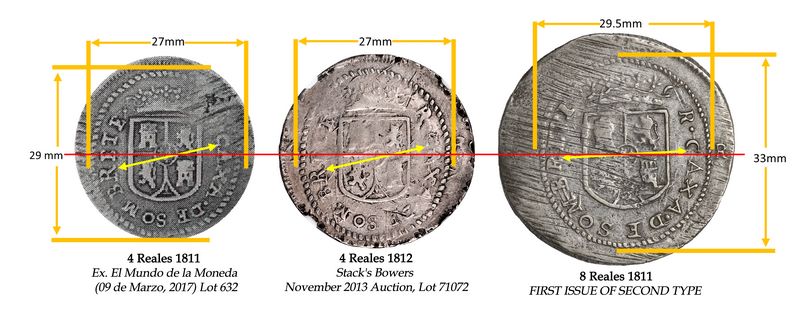 A comparison of the shields
A comparison of the shields
A quick way to identify this very rare obverse of 8 Reales of the first coinage of the second type is the concomitance between the culmination of the upper right part of the shield and the beginning of the R at the beginning of the legend. In case these elements are not visible, you can refer to the lower left corner, where there is a clear misalignment and die marks between the M and the B.
In our extensive search in physical and online archives, we only located six particular examples of this first coinage of the second type (lillustrated in the annex), which is surprising since we located 11 pieces of the 1810 punched type, 23 pieces of the 1811 punched type, 18 of the 1811 minted type and 49 of the 1812 minted type of 1812. It is rarer than an 1810.
Chronology of the Second Type of issue
Second Type 1811 – Coat of Arms and small “Vargas”
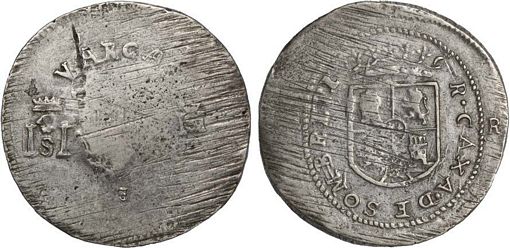
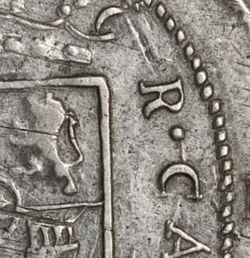
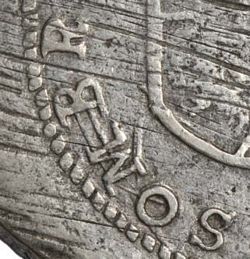
OBVERSE
• Diameter of inner gráfila 29.5 millimeters; and
• Thin or mixed type.
REVERSE
• VARGAS with slim and small type.

Second Type 1811 – Small “Vargas”
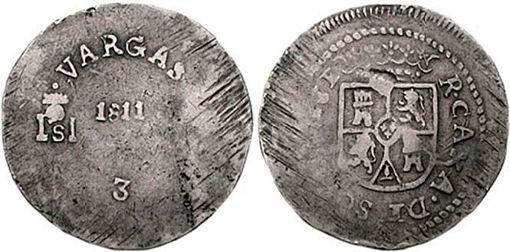 Ponterio & Associates - Sale 146 - C.I.C.F. Auction, 25 Abril 1908, Lot 290.
Ponterio & Associates - Sale 146 - C.I.C.F. Auction, 25 Abril 1908, Lot 290.
OBVERSE
• Diameter of inner gráfila greater than 29.5 millimeters; and
• Thin or mixed type.
REVERSE
• VARGAS with slim and small type.
VARIANTS
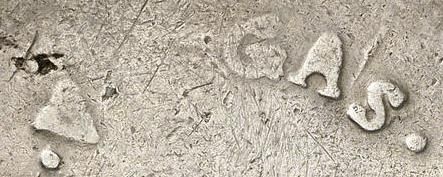
• Period after VARGAS; and
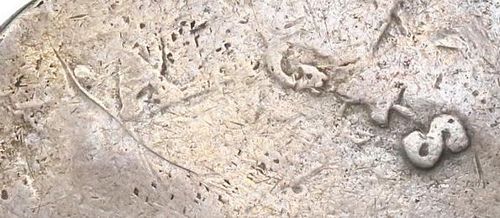
• No period after VARGAS.
Second Type 1811 – Coat of Arms and Large “Vargas”
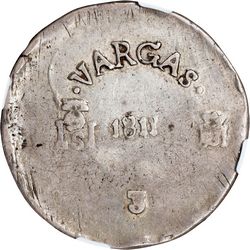
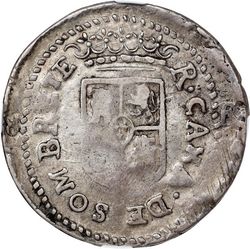
KM-177 (Stack’s Bowers Auction, 17 August 2024, Lot 44178)
"Variety with large "VARGAS". Rather well-executed for this invariably crude issue.
Full legends are visible on the shield side, while the opposing side shows a clear date and bold "VARGAS' across the top"
OBVERSE
• Diameter of inner gráfila greater than 29.5 mm; and
• Preominantly large type.
REVERSE
• VARGAS with large type.

VARIANTS
• smooth edge, or
• corded edge.
Second Type 1812 – Large Typography
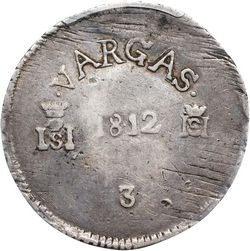
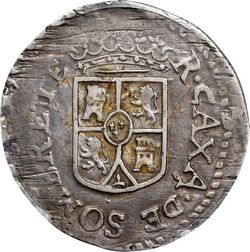
KM-177 (Stack’s Bowers Auction, 17 August 2024, Lot 44179)
"Variety with large "VARGAS" and stop after "CAXA"
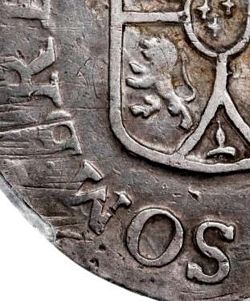
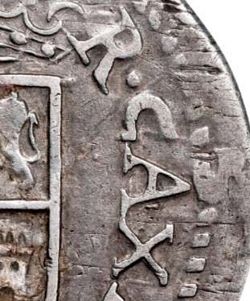
OBVERSE
• Diameter of inner gráfila greater than 29.5 mm; and
• Preominantly large type.
REVERSE
• VARGAS with large type.
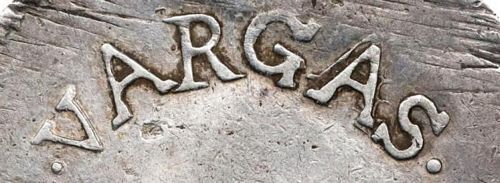 Note: There are a large number of stamps.
Note: There are a large number of stamps.
VARIANTS
• smooth edge, or
• corded edge.
Annex – Examples of First Coinage of the Second Type
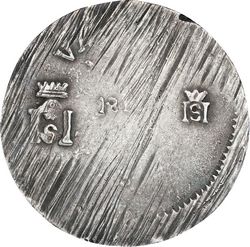
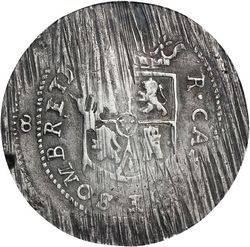
KM-177 PCGS XF40 (Stack’s Bowers Auction, 28 February 2024, lot 73086),
ex. Ponterio & Associates Baltimore Auction,5 May 2010, lot 7401
"crisp detail with impressive clarity, yielding a rare view of the denomination, date, a full "SOMBRERETE", and bold S-between-pillars mintmarks"
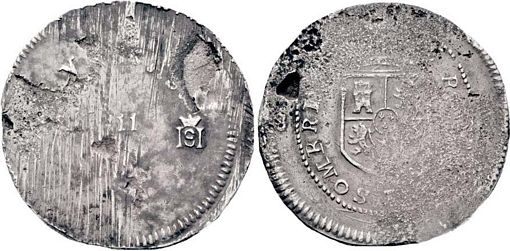 Notafelius Auction, 26 May 2018, lot 443, ex. Cayón Numismática, 4 February 2012, lot 1387
Notafelius Auction, 26 May 2018, lot 443, ex. Cayón Numismática, 4 February 2012, lot 1387
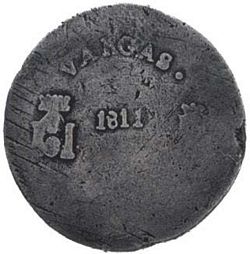
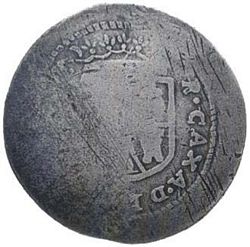
El Mundo de la Moneda Auction, 3 April 2008, lot 602
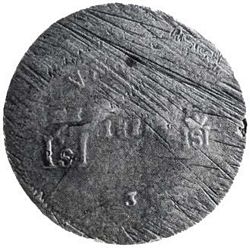
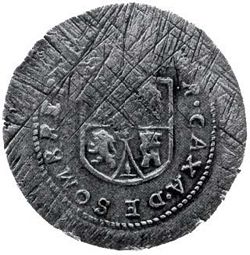
El Mundo de la Moneda Auction, 15 March 2007, lot 913, ex Ponterio Sale 109, 7 October 2000, lot 610,
Richard Long MAS 79, 16 October 1995, lot 230
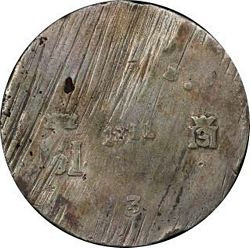
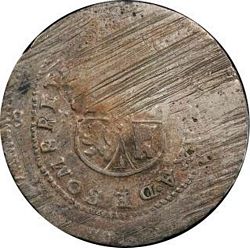
PCGS VF30
